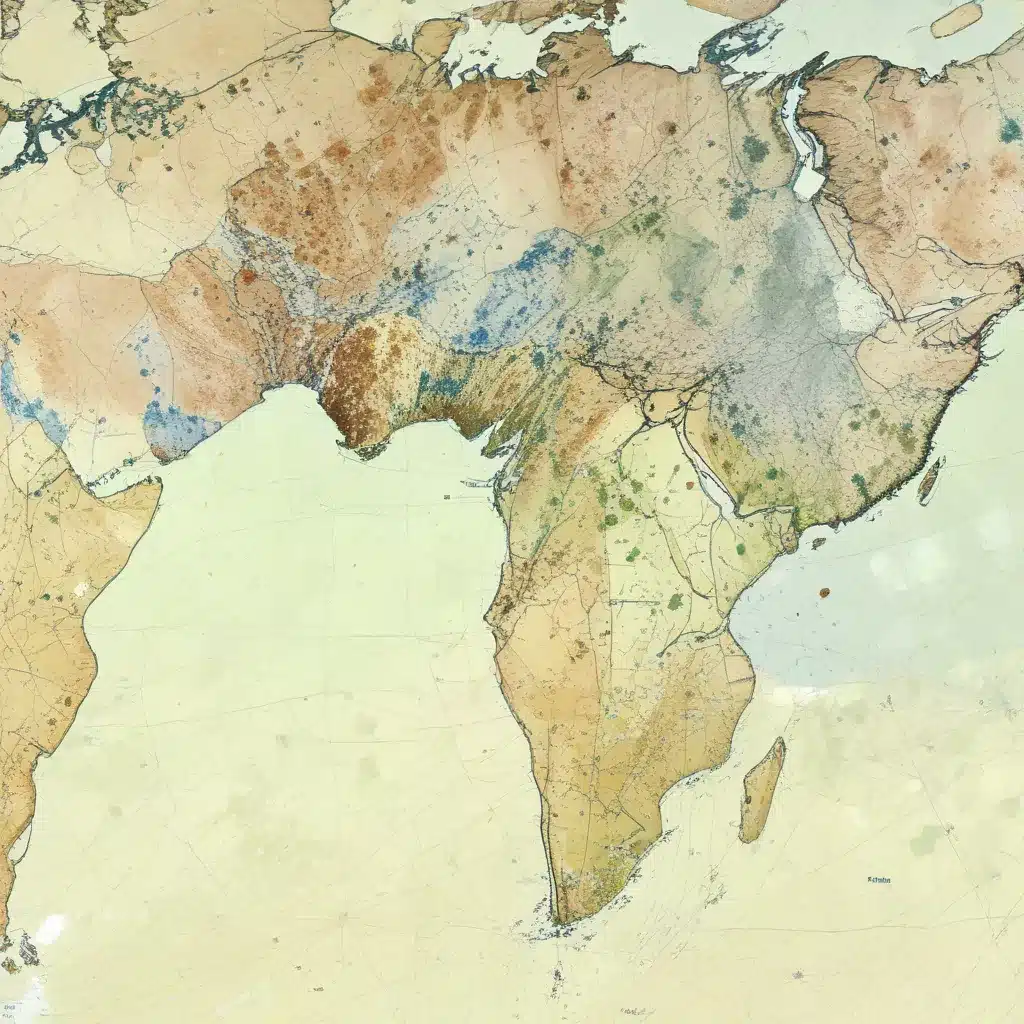
Exploring the Intricate Web of Microbial Interactions Across Earth’s Climatic Zones
The diversity and interconnectedness of soil microbiomes play a crucial role in maintaining the delicate balance of our planet’s ecosystems. As IT professionals, we have a unique opportunity to leverage cutting-edge data analysis techniques to uncover the complex patterns governing microbial communities worldwide.
In this comprehensive article, we delve into the insights gained from a groundbreaking study that utilized the Earth Microbiome Project (EMP) dataset to analyze microbial co-occurrence networks across diverse climatic regions. By adopting a network-based approach, researchers have uncovered remarkable spatial and climatic trends, shedding light on the intricate web of microbial interactions that shape the global soil landscape.
Unraveling Microbial Biogeography through Co-occurrence Networks
Soil microbiota are the primary drivers of numerous biogeochemical cycles, playing a vital role in maintaining soil health, fertility, and the breakdown of organic materials. Recent research has revealed that climate properties can significantly influence the composition and function of these microbial communities, suggesting a promising avenue for targeted manipulation to improve soil wellness.
To gain a comprehensive understanding of these dynamics, the researchers leveraged the power of the Earth Microbiome Project (EMP), a vast public database of standardized microbial samples collected from around the world. By focusing on the “Soil (non-saline)” category, they were able to analyze over 4,000 free-living soil samples distributed across 19 climatic zones, as defined by the widely-used Köppen-Geiger climate classification system.
“To gain valuable insights regarding soil microbiome and develop a systems-level understanding of community function and structure, it is important to characterise soil microbiota, their interactions within different geoclimatic areas, and their contributions to various soil biogeochemical processes.”
The researchers employed a cutting-edge network analysis approach, constructing microbial co-occurrence networks to uncover the intricate relationships between microorganisms in diverse habitats. By representing individual microbes as nodes and their significant interactions as edges, this technique allowed the researchers to explore the complex interplay within microbial communities and identify any co-occurrence patterns across different climatic regions.
Uncovering Spatial and Climatic Trends in Microbial Networks
The analysis revealed striking differences in the topological features of microbial co-occurrence networks across the climatic spectrum. Arid, Polar, and Tropical zones exhibited lower overall diversity but maintained denser networks, while Temperate and Cold zones displayed higher diversity alongside more modular network structures.
“Emerging patterns include significant non-random connections, niche specialisation, unanticipated ecological links, and deterministic processes at many taxonomic levels, all of which have not been detected before in co-occurrence data.”
Further examination uncovered climate-specific co-occurrence patterns, with certain taxonomic groups, such as Acidobacteria, Actinobacteria, Bacteroidetes, Chloroflexi, Planctomycetes, and Proteobacteria, forming significant associations in specific climatic zones. These findings highlight the pivotal role of climate in shaping the structure and dynamics of microbial communities.
Intriguingly, the researchers also identified a substantial number of “hub” taxa – highly connected nodes that play a central role in the network. These hub species, predominantly belonging to phyla like Acidobacteria, Actinobacteria, Bacteroidetes, Chloroflexi, Gemmatimonadetes, Nitrospirae, Planctomycetes, Proteobacteria, and Verrucomicrobia, emerged as potential keystone species that may be crucial in orchestrating ecological processes across broad ecosystems.
Implications for Understanding Microbial Interactions and Ecosystem Function
The insights gleaned from this study not only enhance our knowledge of microbial biogeography but also have profound implications for understanding the intricate relationships within soil microbiomes and their contributions to various ecosystem functions.
“Together these findings suggest that microbial interactions may have a more substantial impact on soil functions than species diversity, underscoring the significance of comprehending the mechanisms that shape microbial communities in distinct regions and climates.”
By revealing the distinct topological features and co-occurrence patterns associated with different climatic zones, the researchers have provided a roadmap for investigating the ecological complexity and functional redundancy within microbial communities. This knowledge can inform efforts to target specific microbial groups for soil health interventions, ultimately benefiting agriculture, water management, conservation, and disaster risk reduction efforts.
Advancing Microbial Ecology Through Network-Based Approaches
The study’s novel application of co-occurrence network analysis to the Earth Microbiome Project dataset represents a significant step forward in the field of microbial ecology. By moving beyond traditional compositional analyses and delving into the intricate web of microbial interactions, researchers have uncovered previously unseen patterns and identified potential keystone species that warrant further investigation.
However, the researchers acknowledge that their findings primarily rely on statistical correlations and require experimental validation to confirm the credibility of the observed relationships. Additionally, the geographical scope of the study, while expansive, could be further broadened to encompass a more diverse range of climatic regions, particularly in underrepresented areas such as Africa, Asia, and Australia.
“It is essential to conduct further investigations into the functional properties and biological roles of microbiome communities within each environment. Understanding the specific functions and contributions of these communities in their respective environments will provide a more comprehensive understanding of their ecological significance and potential implications for various ecosystems.”
As we continue to unravel the complexity of global microbial communities, network-based approaches like the one demonstrated in this study will undoubtedly play a crucial role in advancing our understanding of these intricate systems. By leveraging powerful data analysis techniques and vast, standardized datasets, IT professionals can contribute invaluable insights that inform our stewardship of the planet’s delicate, yet resilient, microbial ecosystems.
Visit https://itfix.org.uk/networking-support/ to explore more cutting-edge IT solutions and expert insights that bridge the gap between technology and the natural world.












